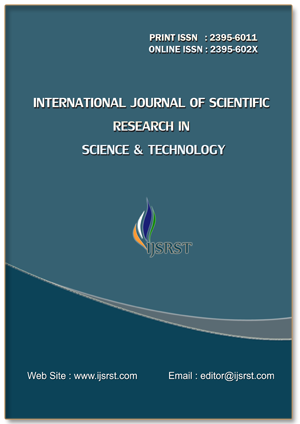Influence of Roadway Surface and Vehicular Speeds on Noise Levels: Case Study on NH-163
Keywords:
IRI, SPB, CPB, Speed, noise levelsAbstract
With the increasing population day by day across the world, a rise in the demand for vehicle usage has been observed. With the increasing number of vehicles, increase in noise pollution has been observed. At present, many cities across the world and in our country are facing the issues of noise pollution. Noise pollution leads to several health issues including hearing issues, sleep annoyance, cardiovascular problems, psychological issues like stress, anxiety and so on. For the current study purpose noise levels were measured by far filed methodology including statistical pass- by (SPB) method, controlled pass- by (CPB) method and coast- by (CB) method using sound level meter and the roughness values in terms of IRI were measured using axle mounted roughometer. The site selected for the study purpose are Warangal- Hyderabad National Highway (NH163) (rigid pavements) and NIT Warangal campus (flexible pavements). In NH 163, noise produced by individual vehicles was measured using SPB method whereas CPB and CB methods were adopted inside the campus. Noise levels measured by CPB methods gives an estimate of overall noise and CB method gives tire- pavement interaction noise, whereas the propulsion noise is determined by logarithmic subtraction of noise measured by CB method from that of CPB method. In- vehicle noise experienced by the driver at different roughness and speed were also quantified by CB method in both window open and closed condition by keeping SLM near the driver’s ear. Collected data were analysed to identify the effect of speed and roughness on traffic noise as well as the variation of cross- over speed with roughness and the variation in the in- vehicle noise. On an average, with each increase in roughness value (IRI in m/km), cross over speed decreases by 2.87 kmph. On an average, in- vehicle noise experienced by the driver in window closed condition is 0.3- 5.3 dB (A) lower than that of windows open condition, depending on the speed of vehicle also. Higher noise levels are caused due to heavy vehicle, followed by LCV, car and the least by two- wheelers Finally, model was developed using the data collected from overall traffic to predict noise produced by types of vehicles considered under the study, while traveling at any roughness and speed values and validation of the model also has to be carried out.
Downloads
References
Agarwal, S., and Swami, B. L., (2011), “Comprehensive Approach for the Development of Traffic Noise Prediction Model for Jaipur City”. Environmental Monitoring and Assessment, 172(1-4), 113-120.
Al- Mutari, N. Z., Al- Attar, M. A., and Al- Rukaibi, F. S., (2011), “Traffic- generated Noise Pollution: Exposure of Roadusers and Populations in Metropolitan Kuwait”. Environmental Monitoring and Assessment, 183(1-4), 65-75.
Bennert, T., Hanson, D., Maher, A., and Vitillo, N., (2005), “Influence of Pavement Surface Type on Tire- Pavement Generated Noise”. Journal of Testing and Evaluation, 33(2), 94- 100.
Bhosale, B. J., Late, Amul., Nalawade, P. M., Chavan, S. P., and Mule, M. B., (2010), “Studies on Assessment of Traffic Noise Level in Aurangabad City, India”, Noise and Health, An Inter- disciplinary International Journal.
Boodihal, M. A., Chethan, A., Swamy, R., Sahu, R., and Biligiri, (2014), “Development of Tyre/ Road Noise Assessment Methodology in India”. Case Studies in Construction Material 1 (2014) 115- 124.
Downloads
Published
Issue
Section
License
Copyright (c) 2024 International Journal of Scientific Research in Science and Technology

This work is licensed under a Creative Commons Attribution 4.0 International License.
https://creativecommons.org/licenses/by/4.0




